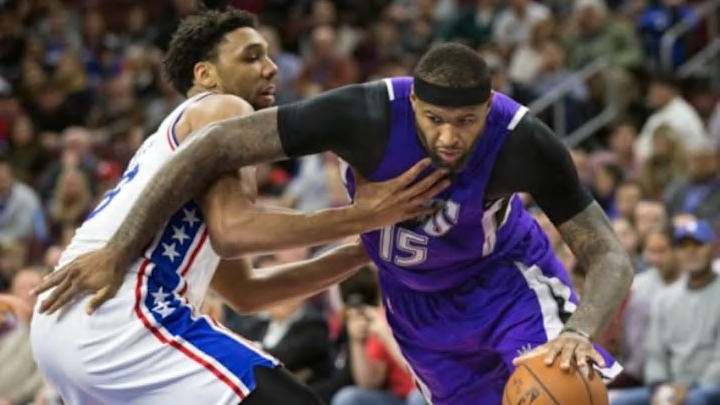
Although Jahlil Okafor’s offense has shown promise, his defense has lagged behind significantly. His rim protection statistics have been in the negative, as has his defensive Player Tracking Plus Minus.[1. Through February 26, Okafor had “saved” -0.13 points per 36 minutes. Through February 8, he had posted a -1.52 defensive PT-PM.] Entering the week, defensive Real Plus Minus had him at -1.86 — second lowest among centers — which happened to mirror his relative standing in defensive Box Plus/Minus (-1.6).
This latter figure is worth placing in historical context. Compared to other rookie big men with at least 1,000 minutes since the 1973-74 season, Okafor’s DBPM ranks among the bottom 10. Naturally, such a performance leads us to wonder how similar players have fared in subsequent years — that is, whether their defense eventually improved.
The following chart focuses on the career progression of big men who, like Okafor, had negative DBPM in their rookie season. It tracks their defensive performance in each of their ensuing four years. The blue dots represent the minutes-weighted average DBPM for these players.
As we might expect, there’s a slight uptick in defensive performance between the rookie and sophomore campaigns, but it levels off immediately thereafter. It hovers just a shade below 0 DBPM in the third year and basically remains there through the fifth year. In general, these defensively challenged big men seem to have a hard time catching up to their peers.
| Minutes-Weighted Average Defensive BPM among Big Men | ||||||
| Year 1 | Year 2 | Year 3 | Year 4 | Year 5 | Career | |
| Poor Defenders | -0.89 | -0.39 | -0.17 | -0.16 | -0.02 | -0.22 |
| All Big Men | 0.61 | 0.85 | 1.08 | 1.13 | 1.17 | 1.15 |
| Gap | -1.50 | -1.24 | -1.25 | -1.29 | -1.19 | -1.37 |
There are, of course, a few instances in which players elevated their defensive games from negatives to positives. Most notably, Charles Smith, JaVale McGee, and Tony Battie were squarely above 0 DBPM by their third years, then moved up to roughly +2 or so by their fifth years. But bear in mind that they started off from higher baselines than Okafor’s current performance, and their career DBPMs of +1 put them at just right around the typical mark for big men. While the best-case scenarios reach average defensive production, those who are farther behind (like James Edwards, Eddy Curry, and Chris Mihm) tend to stay below 0 both in individual seasons and in their overall careers.
To be sure, defense is immensely difficult to measure. By no means is DBPM the sole benchmark, and in this brief post, the small samples make it a challenge to draw any firm conclusions. Furthermore, according to some reports, Okafor appears to be getting a lot of defensive coaching, so perhaps he can be among the exceptions down the line. But he certainly has his work cut out for him, as the data suggest that he has a long way to go.
